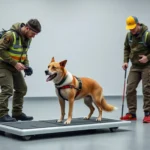
Introduction
The Havanese is a charming breed known for its friendly disposition and affectionate nature. These small, sturdy dogs are often described as playful, intelligent, and eager to please. Their social temperament makes them excellent companions, but it also underscores the importance of effective training. Without the right guidance, Havanese can develop bad habits that may be difficult to correct.
In this article, we aim to provide a comprehensive guide on how to train a Havanese effectively. From understanding their unique behavior to employing positive reinforcement strategies, this guide will equip you with the tools necessary for successful training. Positive reinforcement, in particular, is a cornerstone of effective dog training, helping to build a trusting relationship between you and your furry friend.
Understanding Havanese Behavior
Temperament of Havanese
The Havanese breed is often characterized by its friendly and social nature. They thrive on interaction with people and other dogs, making them excellent family pets. Their intelligence and eagerness to please mean that they can be trained effectively, provided that the training is approached with patience and understanding.
Common Behavioral Traits
Havanese are playful and energetic, which can sometimes lead to a bit of stubbornness. While they love to engage in play, they can also display independent streaks that may complicate training. Understanding these traits is essential for developing effective training techniques tailored to your Havanese’s unique personality.
Importance of Early Socialization
Early socialization is critical for Havanese puppies. Introducing them to various environments, people, and other animals will help them develop into well-rounded adults. Socialization activities can include:
- Visiting dog parks
- Attending puppy classes
- Inviting friends over to meet your puppy
By exposing your Havanese to diverse situations, you can prevent behavioral issues down the line and create a confident, well-adjusted adult dog.
Preparing for Training
Essential Training Supplies
Before you begin the training process, gather essential supplies. Here are some must-haves for training your Havanese:
- Leash and collar/harness: A lightweight leash and a comfortable collar or harness are vital for control during training sessions.
- Treats and toys: High-value treats will motivate your Havanese to learn. Toys can also be used as rewards during play.
- Crate for training purposes: A crate can serve as a safe space for your Havanese and is useful for housebreaking.
Creating a Training Schedule
Establishing a training schedule is crucial for success. Consistency is key when training a Havanese. Here are some tips for creating an effective training routine:
- Time commitment: Dedicate time each day to training sessions. Short, focused sessions of 5-15 minutes are often more effective than longer sessions.
- Recommended duration and frequency: Aim for 2-3 training sessions per day, allowing for breaks in between.
Setting Up a Training Environment
Creating a conducive training environment is essential for effective learning. Choose a quiet, distraction-free space where your Havanese can focus. Ensure that the atmosphere is positive and safe, allowing your dog to feel comfortable and secure.
Basic Commands Training
Teaching ‘Sit’
One of the first commands to teach your Havanese is ‘Sit’. Here’s how to do it:
- Hold a treat close to your Havanese’s nose.
- Move your hand upwards, allowing their head to follow the treat.
- As their head goes up, their bottom will lower.
- Once they’re in a sitting position, say ‘Sit’ and give them the treat.
Common mistakes to avoid: Be patient; if your Havanese doesn’t sit immediately, don’t force them. Instead, repeat the process gently and encourage them.
Teaching ‘Stay’
The ‘Stay’ command is crucial for your Havanese’s safety. Here’s a step-by-step guide:
- Start with your Havanese in a sitting position.
- Show your palm and say ‘Stay’.
- Take a few steps back. If they stay, reward them with a treat.
- Gradually increase the distance and duration before rewarding.
Tips for gradual progression: Always return to your Havanese to reward them. Never call them to you while they are staying; this will confuse them.
Teaching ‘Come’
Recall training is vital for a Havanese. To teach ‘Come’:
- Start in a controlled environment.
- Use a leash to prevent them from running away.
- Call your Havanese by name and say ‘Come’ enthusiastically.
- When they come to you, reward them immediately.
Techniques to ensure reliability: Practice this command in different environments and increase distractions gradually.
Teaching ‘Leave It’
The ‘Leave It’ command can prevent your Havanese from picking up harmful objects. Here’s how to teach it:
- Place a treat in both hands.
- Show your Havanese one treat while keeping the other hidden.
- When they try to take the visible treat, say ‘Leave It’.
- Once they back away, reward them with the hidden treat.
Situations where this command is crucial: This command can be particularly useful during walks or when guests arrive.
Advanced Training Techniques
Leash Training
Leash manners are essential for a well-behaved Havanese. Here’s how to train them:
- Importance of leash manners: Teaching your Havanese to walk nicely on a leash will make walks more enjoyable for both of you.
- Techniques for effective leash training: Use treats to reward your Havanese for walking beside you without pulling. If they pull, stop and wait for them to return to your side before continuing.
Crate Training
Crate training offers numerous benefits for a Havanese:
- Benefits of crate training: It provides a safe space for your dog and can assist with housebreaking.
- Step-by-step guide to successful crate training:
- Introduce the crate with treats and praise.
- Gradually increase the time your Havanese spends inside the crate.
- Always associate the crate with positive experiences.
Tricks and Agility Training
Teaching tricks can enhance your Havanese’s mental stimulation. Here are some suggested tricks:
- Roll over
- Play dead
- Spin in circles
Introduction to agility training and its benefits: Agility training can be a fun way to bond with your Havanese while providing them with exercise and mental challenges.
Addressing Behavioral Issues
Common Problems in Havanese
Havanese can sometimes exhibit behavioral issues. Here are a couple of common problems:
- Barking: This can be managed by teaching them the ‘Quiet’ command and rewarding silence.
- Separation anxiety: Signs include destructive behavior when left alone. Solutions may involve gradual desensitization to being alone and providing interactive toys.
Positive Reinforcement Strategies
Positive reinforcement is an essential aspect of training. Here’s an overview of effective techniques:
- Overview of positive reinforcement techniques: Reward good behavior with treats, praise, or playtime.
- Examples of effective rewards: Use high-value treats or favorite toys, and always celebrate their successes.
When to Seek Professional Help
While many owners can train their Havanese on their own, sometimes professional help may be necessary. Look for signs that your dog may benefit from additional guidance, such as:
- Persistent behavioral issues
- Difficulty learning basic commands
Choosing the right trainer for your Havanese: Ensure that the trainer uses positive reinforcement methods and has experience with the Havanese breed.
Maintaining Training Progress
Consistency is Key
Consistency in commands and routines is vital. Here’s how to maintain training consistency:
- Importance of consistent commands and routines: Use the same commands and cues every time to avoid confusing your Havanese.
- How to maintain training consistency: Involve all family members in training to ensure everyone uses the same commands.
Regular Practice and Reinforcement
Incorporating training into daily routines helps reinforce learning. Here are some ideas:
- Setting up practice sessions in daily routines: Use mealtime or walks as opportunities for training.
- Incorporating training into playtime: Utilize playtime to practice commands, making it a fun experience.
Tracking Progress
Monitoring your Havanese’s progress can help keep you motivated. Here’s how to do it:
- Keeping a training journal: Document your training sessions, noting successes and areas for improvement.
- Recognizing and celebrating milestones: Celebrate small victories to keep both you and your Havanese motivated.
Conclusion
In summary, training your Havanese is a rewarding experience that fosters a strong bond between you and your furry friend. By understanding their unique behavior, employing effective training techniques, and maintaining consistency, you can ensure a well-behaved and happy companion. Remember to start training early and be patient; the journey will be well worth the effort. With the right approach, your Havanese can become a well-mannered member of your family, bringing joy and companionship for years to come.









